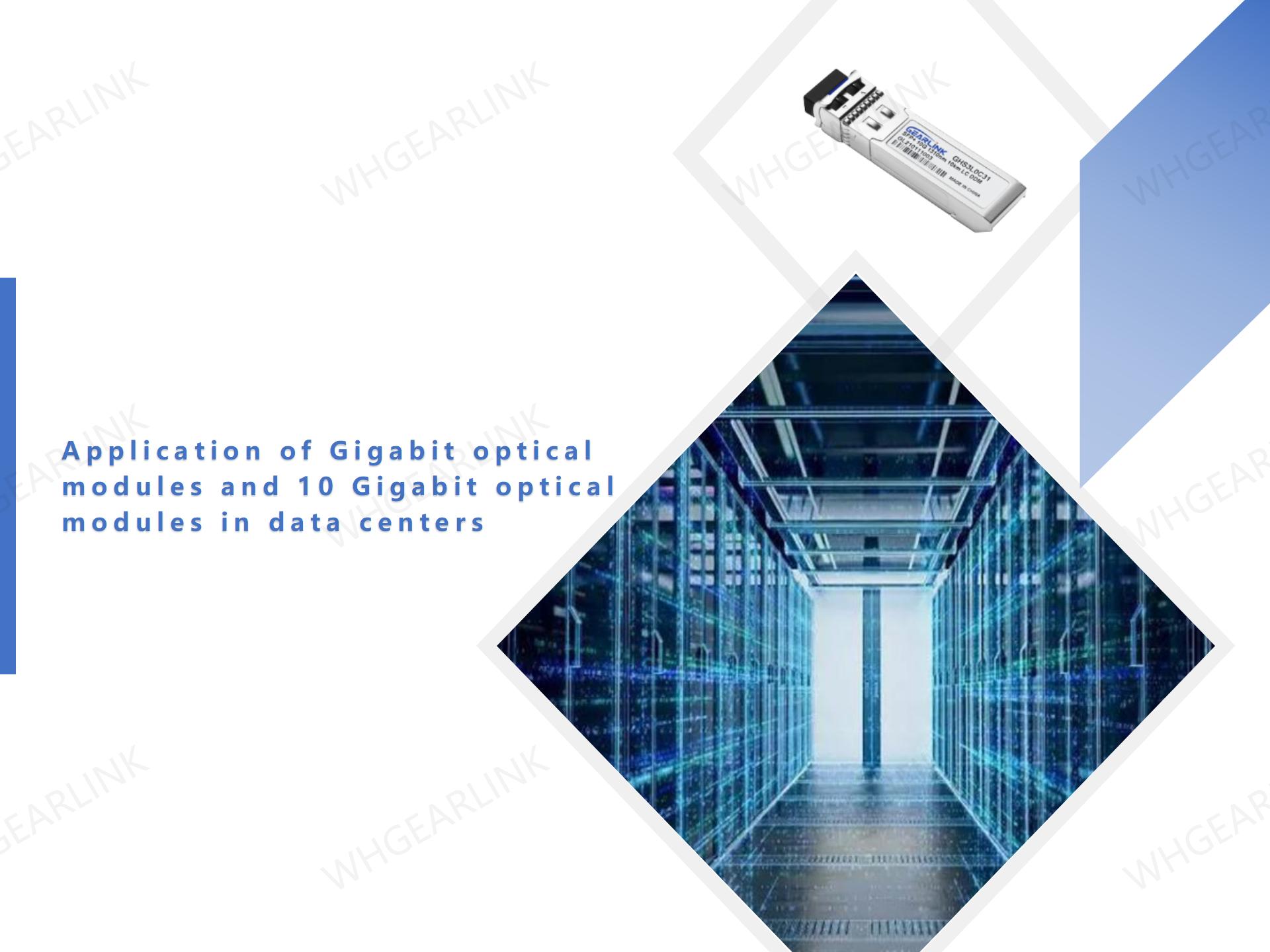The application of Gigabit optical transceivers and 10 Gigabit optical transceivers in data centers is one of the key factors for network optimization. This article will introduce in detail the characteristics, advantages and disadvantages of Gigabit optical transceivers and 10 Gigabit optical transceivers, as well as their applications in data centers, in order to provide you with a more comprehensive guide for purchasing optical transceivers.
In modern data centers, network speed and bandwidth requirements are getting higher and higher, which puts forward higher requirements for data transmission speed and capacity. Gigabit optical transceivers and 10-gigabit optical transceivers, as common types of optical transceivers, play an important role in data centers. So, what are the characteristics, applications, advantages and disadvantages of Gigabit optical transceivers and 10 Gigabit optical transceivers? Next, we will introduce these three aspects in detail.
A gigabit optical transceiver is an optical transceiver with a transmission rate of 1 gigabit per second (Gbps). It follows the Gigabit Ethernet standard to provide reliable high-speed connections for data centers. Gigabit optical transceivers are suitable for small and medium-sized data centers and can meet lower bandwidth requirements, such as data transmission, file sharing, and general Internet applications.
The 10 Gigabit optical transceiver is a high-speed optical transceiver with a transmission rate of 10 gigabits per second (10Gbps). It can provide higher bandwidth and faster data transmission speed to meet the demand for high-speed and large-capacity data transmission in large data centers. 10 Gigabit optical transceivers are often used in large-scale data centers, cloud computing and big data processing scenarios, and can support high-speed connections between multiple servers, storage devices and network switches.
Advantages of gigabit optical transceivers
In terms of data center applications, the advantages of gigabit optical transceivers are mainly: its low cost, high stability and reliability, and is widely used in small data centers. At the same time, because the speed of the gigabit optical transceiver is not high, its heat generation is relatively small, and it does not even need a fan for heat dissipation, so it can reduce noise and energy consumption, and is an energy-saving and environmentally friendly choice. In addition, Gigabit optical transceivers are still the most widely used optical fiber transceivers in the existing Ethernet market.
Advantages of 10 Gigabit optical transceivers
The 10 Gigabit optical transceiver shows excellent performance in high-speed data transmission and large-scale data center applications. Its advantages mainly lie in the high-speed transmission of large data streams and support for more connections, and it can also adapt to the ever-expanding network architecture. In addition, the 10G optical transceiver has good compatibility, supports the use of various types of optical fibers such as OM2, OM3, and OM4, and can adapt to the requirements of different data center applications.
Application of gigabit optical transceivers in data centers
The application of Gigabit optical transceivers in data centers is mainly concentrated in small and medium-sized data center systems. In these application environments, the transmission rate of gigabit optical transceivers is sufficient to meet daily business needs, and at the same time meet the energy-saving and environmental protection goals of reducing energy consumption and noise, showing its wide applicability.
Application of 10 Gigabit optical transceivers in data centers
For large and ultra-large data center systems, in order to process huge amounts of data, high bandwidth and speed are required to ensure timely data transmission and processing capabilities. At this time, the application of 10 Gigabit optical transceivers is particularly important. The 10 Gigabit optical transceiver can quickly transmit and process massive data, which can meet the performance requirements of large data centers, improve data transmission efficiency, and improve the overall performance level of data centers.
In the data center, Gigabit optical transceivers and 10 Gigabit optical transceivers play a key role, meeting the needs of data centers of different sizes and levels. Their application enables data centers to process data more efficiently, provide high-speed network connections, and support large-scale cloud computing, big data analysis, and artificial intelligence applications. When selecting a suitable optical transceiver, factors such as the application environment, bandwidth requirements, cost, and performance should be considered to achieve the best data transmission effect and the highest cost performance.


